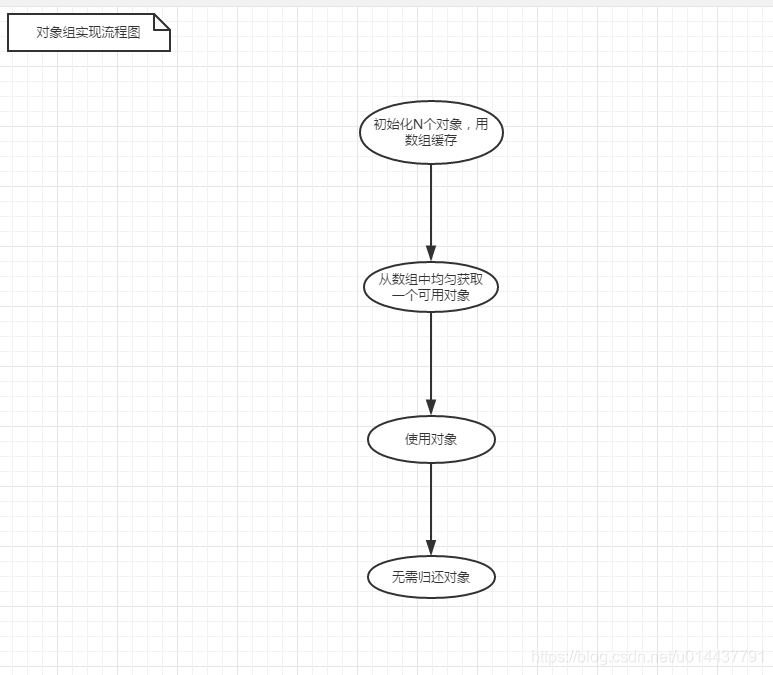之前我们提到的netty都是基于netty3版本的,现在我们用5来尝试下netty的客户端和服务端,与3还是存在部分差别的。
下面是具体的代码,注解在代码中
- pom文件
<?xml version="1.0" encoding="UTF-8"?>
<project xmlns="http://maven.apache.org/POM/4.0.0"
xmlns:xsi="http://www.w3.org/2001/XMLSchema-instance"
xsi:schemaLocation="http://maven.apache.org/POM/4.0.0 http://maven.apache.org/xsd/maven-4.0.0.xsd">
<modelVersion>4.0.0</modelVersion>
<groupId>com.xiyou</groupId>
<artifactId>netty-test-5</artifactId>
<version>1.0-SNAPSHOT</version>
<dependencies>
<dependency>
<groupId>io.netty</groupId>
<artifactId>netty-all</artifactId>
<version>5.0.0.Alpha2</version>
</dependency>
</dependencies>
</project>
- 服务端server
package com.xiyou.test.netty5;
import io.netty.bootstrap.ServerBootstrap;
import io.netty.channel.*;
import io.netty.channel.nio.NioEventLoopGroup;
import io.netty.channel.socket.nio.NioServerSocketChannel;
import io.netty.handler.codec.string.StringDecoder;
import io.netty.handler.codec.string.StringEncoder;
/**
* 用netty5实现服务端
*/
public class Server {
public static void main(String[] args) {
// 创建一个服务类
ServerBootstrap serverBootstrap = new ServerBootstrap();
// 创建woker和boss线程池组
// netty5创建的并不是连接池,而是用本身封装好的方法,其实现是ScheduledExecutor连接池
EventLoopGroup boss = new NioEventLoopGroup();
EventLoopGroup worker = new NioEventLoopGroup();
try {
// 设置线程池
serverBootstrap.group(boss, worker);
// 设置nioSocket工厂,和三有不同
serverBootstrap.channel(NioServerSocketChannel.class);
// 设置管道工厂,和3也有不同
serverBootstrap.childHandler(new ChannelInitializer<Channel>() {
@Override
protected void initChannel(Channel channel) throws Exception {
channel.pipeline().addLast("encoder", new StringEncoder());
channel.pipeline().addLast("decoder", new StringDecoder());
channel.pipeline().addLast("serverHandler", new ServerHandler());
}
});
// 设置参数,TCP参数
// serverSocketChannel的设置,连接缓冲池的大小,accept的最大连接数
serverBootstrap.option(ChannelOption.SO_BACKLOG, 2048);
// socketChannel的设置,维持连接的活跃,清除无用的死连接
serverBootstrap.childOption(ChannelOption.SO_KEEPALIVE, true);
// socketChannel的设置,关闭延迟发送(就是关闭缓冲池)
serverBootstrap.childOption(ChannelOption.TCP_NODELAY, true);
// 绑定端口
ChannelFuture future = serverBootstrap.bind(10101);
System.out.println("服务端正常启动!!");
// 等待服务端关闭, 该方法会阻塞在这里, 关闭后执行
// 该管道是serverSocketChannel
future.channel().closeFuture().sync();
}catch (Exception e){
e.printStackTrace();
}finally {
// 关闭boss和worker
boss.shutdownGracefully();
worker.shutdownGracefully();
}
}
}
- 服务端的Handler
package com.xiyou.test.netty5;
import io.netty.channel.Channel;
import io.netty.channel.ChannelHandlerContext;
import io.netty.channel.SimpleChannelInboundHandler;
/**
* 该泛型表示接受到的信息的类型
* 解码器成功解码后,不再是Object类型,而直接就是一个String类型
*/
public class ServerHandler extends SimpleChannelInboundHandler<String> {
/**
* 接收客户端发送的数据
* @param channelHandlerContext
* @param msg
* @throws Exception
*/
protected void messageReceived(ChannelHandlerContext channelHandlerContext, String msg) throws Exception {
System.out.println("messageReceived: " + msg);
// 得到回写到客户端的channel
Channel channel = channelHandlerContext.channel();
channel.write("服务端接受到的消息是: " + msg + "from server");
// 这里必须flush,否则客户端收不到消息(不会立刻发送,如果不进行flush)
channel.flush();
/*
// 可以直接调用该方法,该方法相当于write+flush
channel.writeAndFlush(msg);
// 也可以用下面的方法,都是同一个方法
channelHandlerContext.writeAndFlush(msg);
*/
}
/**
* 客户端接入
*/
@Override
public void channelActive(ChannelHandlerContext ctx) throws Exception {
System.out.println("channelActive");
super.channelActive(ctx);
}
/**
* 客户端断开(相当于3的disConnected)
*/
@Override
public void channelInactive(ChannelHandlerContext ctx) throws Exception {
System.out.println("channelInactive");
super.channelInactive(ctx);
}
/**
* 异常处理
* @param ctx
* @param cause
* @throws Exception
*/
@Override
public void exceptionCaught(ChannelHandlerContext ctx, Throwable cause) throws Exception {
super.exceptionCaught(ctx, cause);
}
}
- 客户端client
package com.xiyou.test.netty5;
import io.netty.bootstrap.Bootstrap;
import io.netty.channel.*;
import io.netty.channel.nio.NioEventLoopGroup;
import io.netty.channel.socket.nio.NioSocketChannel;
import io.netty.handler.codec.string.StringDecoder;
import io.netty.handler.codec.string.StringEncoder;
import java.io.BufferedReader;
import java.io.InputStreamReader;
/**
* netty5实现的客户端
*/
public class Client {
public static void main(String[] args) {
// 服务类
Bootstrap bootstrap = new Bootstrap();
// worker
// 这里只建worker用来监听数据的交互,因为是客户端,所以无需监听端口,监听accept操作
EventLoopGroup worker = new NioEventLoopGroup();
try {
// 设置线程池
bootstrap.group(worker);
// 设置socket工厂
bootstrap.channel(NioSocketChannel.class);
// 设置管道
bootstrap.handler(new ChannelInitializer<Channel>() {
@Override
protected void initChannel(Channel channel) throws Exception {
channel.pipeline().addLast("encoder", new StringEncoder());
channel.pipeline().addLast("decoder", new StringDecoder());
channel.pipeline().addLast("clientHandler", new ClientHandler());
}
});
// 连接服务端
ChannelFuture future = bootstrap.connect("127.0.0.1", 10101);
// 得到通道,给服务端写数据
Channel channel = future.channel();
channel.writeAndFlush("hello");
BufferedReader bufferedReader = new BufferedReader(new InputStreamReader(System.in));
while (true){
String line = bufferedReader.readLine();
if(!"stop".equals(line)){
System.out.println("请输入:");
future.channel().writeAndFlush(line);
}
else {
break;
}
}
}catch (Exception e){
e.printStackTrace();
}finally {
worker.shutdownGracefully();
}
}
}
- 客户端Handler
package com.xiyou.test.netty5;
import io.netty.channel.ChannelHandlerContext;
import io.netty.channel.SimpleChannelInboundHandler;
/**
* 该泛型表示接受到的信息的类型
* 解码器成功解码后,不再是Object类型,而直接就是一个String类型
*/
public class ClientHandler extends SimpleChannelInboundHandler<String> {
/**
* 接收客户端发送的数据
* @param channelHandlerContext
* @param msg
* @throws Exception
*/
@Override
protected void messageReceived(ChannelHandlerContext channelHandlerContext, String msg) throws Exception {
System.out.println("接收到的客户端发送的消息:" + msg);
}
/**
* 客户端接入
*/
@Override
public void channelActive(ChannelHandlerContext ctx) throws Exception {
System.out.println("channelActive");
super.channelActive(ctx);
}
/**
* 客户端断开(相当于3的disConnected)
*/
@Override
public void channelInactive(ChannelHandlerContext ctx) throws Exception {
System.out.println("channelInactive");
super.channelInactive(ctx);
}
/**
* 异常处理
* @param ctx
* @param cause
* @throws Exception
*/
@Override
public void exceptionCaught(ChannelHandlerContext ctx, Throwable cause) throws Exception {
super.exceptionCaught(ctx, cause);
}
}
下面我们研究下多连接客户端的启动类,其实简单的理解就是类似连接池,直接建立好多个连接,然后保存起来
那么我们应该如何保存这些连接呢?
- 这里我们给出两种策略:
(1)使用对象组去保存,这样子线程安全,并且不会产生阻塞效应(对象组就是一个数组或者列表去保存)

(2)使用对象池去保存,线程不安全,会产生阻塞效应(阻塞的原因是,池子中没有可用的连接)

我们可以理解下一个thread+队列其实就是一个单线程线程池。也就是线程安全的。所以netty5的channel对象是单线程线程池实现的,因此是线程安全的,因此我们可以使用对象组的形式来完成单客户端的多连接。
多连接客户端代码实现:
- 启动类:
package com.xiyou.test.netty5;
import io.netty.bootstrap.Bootstrap;
import io.netty.channel.Channel;
import io.netty.channel.ChannelFuture;
import io.netty.channel.ChannelInitializer;
import io.netty.channel.EventLoopGroup;
import io.netty.channel.nio.NioEventLoopGroup;
import io.netty.channel.socket.nio.NioSocketChannel;
import io.netty.handler.codec.string.StringDecoder;
import io.netty.handler.codec.string.StringEncoder;
import java.util.ArrayList;
import java.util.List;
import java.util.concurrent.atomic.AtomicInteger;
/**
* 多连接的客户端
*/
public class MultClient {
// 服务类的声明
private Bootstrap bootstrap = new Bootstrap();
// 集合,用来保存会话列表
private List<Channel> channels = new ArrayList<>();
// 引用计数器,用来循环遍历列表中的channel
// 默认是从0开始
private final AtomicInteger index = new AtomicInteger();
/**
* 初始化
*/
public void init(int count){
// worker
// 定义一个线程组,这里只声明了worker的作用是我们客户端无需监听accrpt的类型,只用监听数据的读写
EventLoopGroup worker = new NioEventLoopGroup();
// 设置线程池
bootstrap.group(worker);
// 设置socket工厂
bootstrap.channel(NioSocketChannel.class);
// 设置管道
bootstrap.handler(new ChannelInitializer<Channel>() {
@Override
protected void initChannel(Channel channel) {
// 向管道中赋值对应的过滤器
channel.pipeline().addLast(new StringDecoder());
channel.pipeline().addLast(new StringEncoder());
channel.pipeline().addLast(new ClientHandler());
}
});
// 建立连接
for (int i = 0; i < count; i++){
ChannelFuture future = bootstrap.connect("127.0.0.1", 10101);
// 将建立好的通道放到列表中,该通道就是SocectChannel,客户端的channel
channels.add(future.channel());
}
}
/**
* 用来获取下一个通道
* @return
*/
public Channel nextChannel(){
return getActiveChannel(0);
}
/**
* 获得一个可用的channel
* 这个方法设计的不好
* @param count
* @return
*/
private Channel getActiveChannel(int count){
// 得到从列表中轮训的channel
Channel channel = channels.get(Math.abs(index.getAndIncrement() % channels.size()));
// 如果当前通道不可用
if(!channel.isActive()){
System.out.println("连接不可用");
// 重连
reconnect(channel);
if(count >= channels.size()){
throw new RuntimeException("没有可用的连接");
}
return getActiveChannel(count + 1);
}
return channel;
}
/**
* 重连机制,找到之前的channel在列表中的位置,然后新建一个channl,替换他
*/
private void reconnect(Channel channel){
synchronized (channel){
// 如果在列表中找不到该channel
if(channels.indexOf(channel) == -1){
return;
}
// 新建立连接
Channel newChannel = bootstrap.connect("127.0.0.1", 10101).channel();
// 在列表的指定位置赋值
channels.set(channels.indexOf(channel), newChannel);
}
}
}
- 客户端
package com.xiyou.test.netty5;
import java.io.BufferedReader;
import java.io.IOException;
import java.io.InputStreamReader;
/**
* 多连接客户端的启动类
*/
public class MultStart {
public static void main(String[] args) {
MultClient client = new MultClient();
// 表示一开始就建立5个客户端连接,放到list中
client.init(5);
BufferedReader bufferedReader = new BufferedReader(new InputStreamReader(System.in));
while(true){
try {
System.out.println("请输入:");
String line = bufferedReader.readLine();
if(!"stop".equals(line)){
client.nextChannel().writeAndFlush(line);
}
else {
break;
}
} catch (IOException e) {
e.printStackTrace();
}
}
}
}
- 服务端
服务端和之前的一样,我们就不再贴出代码